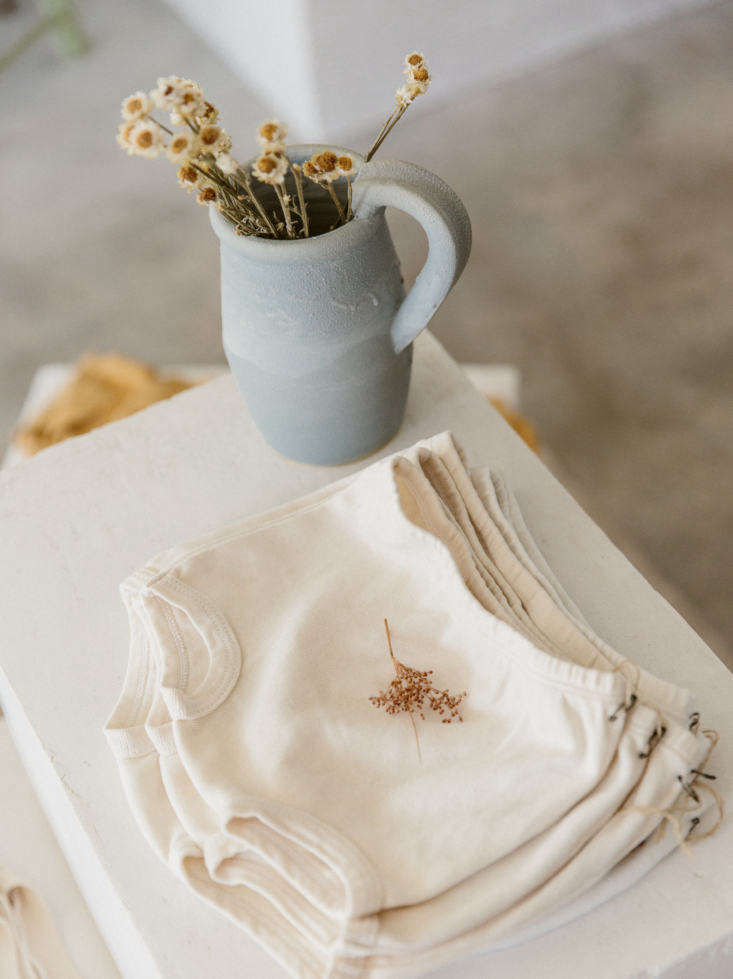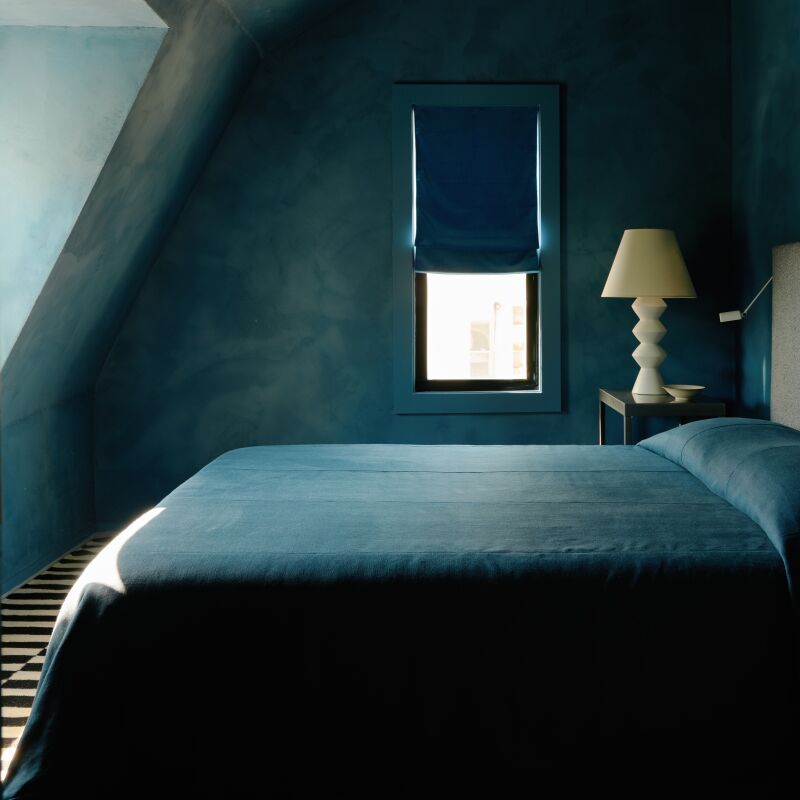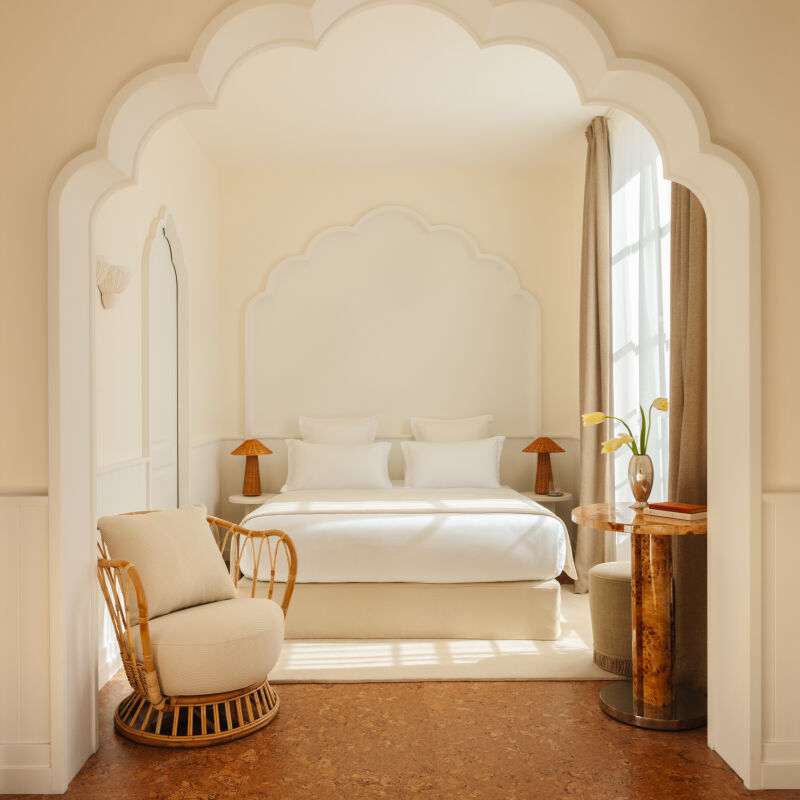Since last summer, when we launched our first-ever Maine issue—since long before that, actually, before we first featured the sculptural house of a sculptor and a clothing designer on Spruce Head—we’ve had our eye on the state and the design revolution quietly taking hold there. Maine has an evocativeness to it, a pull. And now, as of this summer, a sense of it can be felt all the way across the country, in perhaps the most unlikely of places: Rose Avenue in Venice, Los Angeles.
This is Rudy Jude, the first brick and mortar shop of the plant-dyed clothing company of the same name, by Julie O’Rourke. (It was her “Soot House” on Spruce Head we featured back in 2017.) And though it’s some 3,000 miles away from the Maine coast, with its rocky coast and scraggly pines, there’s an echo of Maine when you step inside the shop. For starters, the design of the newly opened space—a 1920s Spanish revival, formerly a house before it was divided into two storefronts—is the work of O’Rourke and her partner Anthony Esteves, the builder whose sculptural style we so admired in their island Soot House. “It was important to me to have touches of Maine,” O’Rourke says. “We used some antique doors and hardware, a Shaker peg rail—but mostly we wanted to peel back some of the modern touches that had been done and really let the history of the building shine.”
Together with a West Coast crew and a few East Coast friends, Esteves stripped down the interiors and re-fitted them simply with wood, plaster, and concrete—the same materials that gave the Soot House its sculptural feel. O’Rourke adds tiny details and ephemera to the purposefully spare space—billowing cloth, rocks and shells, antique glass doorknobs—which, together, evoke Maine and summer, all the way in LA.
Take a look at a few of our favorite elements.
Photography by Nicki Sebastian, courtesy of Rudy Jude.
1. Create a bioswale garden.

The couple also transformed the small plot of land that leads to the shop’s entrance. “It was fenced off with a tall black fence and had a big, built-in seating area and astroturf,” O’Rourke says. They scrapped it all and built a low retaining wall, which now surrounds a small bioswale garden by Tahereh Sheerazie of The Plant Artist. “All of the plants in the garden are native to California, from within 80 miles of the store,” O’Rourke says. “A bioswale is essentially an underground river, and with California’s long and dry summers, this little river helps keep our plants thriving without the need for sprinklers or ground irrigation.”
2. Keep the bones simple.

3. Think of doorways as frames.

(Note also the jigsaw puzzle on the low table by the entry.)
4. Collect natural ephemera.

5. Hang a cloth.

The wooden door here is another tie to Maine: it’s from the 1700s, left over from Esteves’ work on the 1754 Cape across a small clearing from the Soot House.
6. The evocativeness is in the details.


7. Use a branch for display.

8. Create sculptural shelves.


9. Hang peg rails.

The double doors at the top of the stairs are “antique double doors we sourced from an architectural salvage in LA,” O’Rourke says.
10. And Adirondack baskets.


11. Keep the bath vintage.

12. Keep the outside spare.

(Note also the vintage drying rack by the front door.)

More Maine stories:
- Downeast via Texas: The Newly Revived Squire Tarbox Inn in Maine
- Shopper’s Diary: Sugar Tools in Camden, Maine
- The Lost Kitchen: A Glimpse Inside Maine’s Most Wildly In-Demand Restaurant






Have a Question or Comment About This Post?
Join the conversation